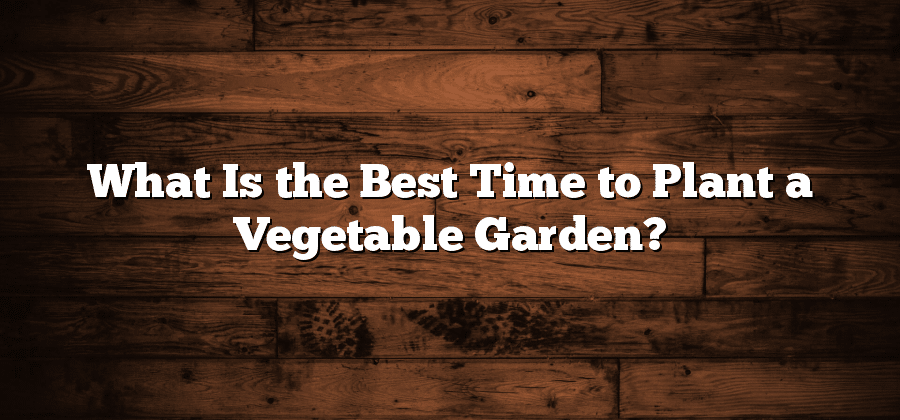Understanding Your Local Climate
The first step in successfully growing vegetables in your region is understanding your local climate. Climate plays a crucial role in determining what types of vegetables can thrive in your area, as well as the optimal growing conditions for each crop. By understanding the unique characteristics of your local climate, you can make informed decisions about which vegetables to cultivate and how to provide them with the best possible growing environment.
One key aspect of understanding your local climate is identifying the average temperature range in your area. Different vegetables have different temperature requirements for germination, growth, and fruiting. Some vegetables, such as tomatoes and peppers, thrive in warmer climates, while others, like carrots and lettuce, prefer cooler temperatures. By knowing the ideal temperature range for the vegetables you want to grow, you can ensure that they will flourish and produce bountiful harvests. Additionally, understanding the fluctuations in temperature throughout the growing season can help you plan and make adjustments to protect your crops from extreme heat or frost.
Identifying the Ideal Temperature Range
Taking into consideration the ideal temperature range for successful vegetable gardening is crucial for a bountiful harvest. Different vegetable plants have specific temperature requirements for optimal growth and development. It is essential to assess your local climate to ensure that you select the right vegetable varieties that can thrive within your temperature range.
Vegetables can generally be categorized into three temperature groups: cool-season, warm-season, and heat-tolerant. Cool-season vegetables, such as lettuce, spinach, and peas, thrive in temperatures ranging from 45°F to 75°F (7°C to 24°C). These vegetables can tolerate light frost and prefer cooler temperatures for optimal growth. On the other hand, warm-season vegetables like tomatoes, peppers, and cucumbers, require temperatures between 65°F to 85°F (18°C to 29°C) to flourish. These plants thrive in the heat and cannot tolerate frost. Lastly, heat-tolerant vegetables like okra, sweet potatoes, and melons can withstand temperatures above 85°F (29°C) and continue to produce throughout hot summers. Understanding the temperature requirements of different vegetables will help you make informed decisions when selecting the right varieties for your garden.
Assessing Soil Moisture and Drainage
One crucial factor to consider when growing vegetables in your region is the soil moisture and drainage. Understanding the moisture level in your soil is essential as both too much or too little moisture can hinder plant growth. To assess the moisture of your soil, you can perform a simple test. Take a handful of soil and squeeze it tightly in your hand. If it holds its shape and moisture seeps out, the soil may be too wet. On the other hand, if the soil crumbles easily and doesn’t hold its shape, your soil may be too dry.
In addition to moisture, proper drainage is necessary for healthy plant growth. Excess waterlogging can lead to root rot, while inadequate drainage can cause nutrient deficiencies. Assessing the drainage of your soil can be done by observing how quickly water is absorbed and drained after watering. If water remains pooled on the surface or takes a long time to drain, it may be an indication that the soil doesn’t have sufficient drainage. Ideally, the soil should drain within a reasonable time frame, allowing excess moisture to flow away while retaining adequate nutrients for the plants.
Evaluating Sunlight and Shade Patterns
When planning a vegetable garden, one crucial factor to consider is the sunlight and shade patterns in your chosen location. Sunlight is vital for photosynthesis, the process by which plants convert light energy into food. Therefore, it’s important to evaluate the amount of direct sunlight your garden will receive throughout the day.
Start by observing your garden area at different times of the day, taking note of where the sun shines the brightest and for how long. Keep in mind that vegetables typically require at least six hours of direct sunlight daily to thrive. Ideally, you’ll want to select a location that receives the most sunlight during this time frame. Additionally, be aware of any areas that may be shaded by nearby trees, buildings, or structures. These can create pockets of shade that may limit the growth of certain vegetable plants. By carefully evaluating sunlight and shade patterns, you can optimize your gardening efforts and ensure that your vegetables receive the light they need to flourish.
Choosing the Right Vegetables for Your Region
When it comes to choosing the right vegetables for your region, it is essential to consider the climate and environmental factors specific to your area. Different vegetables thrive under different conditions, and understanding your local climate will help you make informed choices for a successful harvest. Take note of the average temperature range throughout the growing season, as certain vegetables prefer cooler or warmer conditions. Moisture levels and drainage in your soil are also key factors to consider, as some vegetables require well-drained soil while others thrive in more moisture-retentive soil. By assessing these factors, you can ensure that the vegetables you choose are well-suited to your region’s unique environment.
In addition to climate considerations, it is important to evaluate sunlight and shade patterns in your garden space. Most vegetables require a minimum of six hours of direct sunlight each day to grow and flourish. Observing the sun’s movement and the duration of sunlight in different areas of your garden will allow you to identify the best spots for sun-loving vegetables. Likewise, areas with more shade can be reserved for vegetables that tolerate or even thrive in lower light conditions. By carefully assessing the sunlight and shade patterns, you can maximize the potential of your garden and ensure optimal growth for the vegetables you choose to plant.






